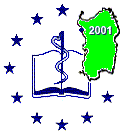 |
Drug information - can the Internet train the health care student? Michelle Wake and Linda Lisgarten |
|
|
|
|
|
 |
Introduction
The amount of drug information available on-line, as with all biomedical information, has boomed1. Pharmacy educators and students are now increasingly embracing the technology. Sometimes it is just accessing the traditional sources but using a new medium, for example bibliographic databases. But with the development of course delivery software such as WebCT (http://WebCT.com), there are moves towards specifically designed courses using quality selected sources which are often delivered on Intranets. The total virtual school of pharmacy is technically possible but, as leading pharmacy educators are emphasing, its desirability, especially at undergraduate level, is questionable2. Development of Online Teaching Joseph T. DiPiro has provided a summary of what is available and it is clear that online teaching has been pioneered by the non-health sector. However, pharmacy courses are now moving into this method of teaching. The USA has led the way in undergraduate4,5 and postgraduate studies6,7 ,8 . The European Commission has recognised the usefulness of the Internet as a training tool for qualified pharmacists by developing a programme on Over the Counter medicines at http://www.imim.es/tesemed. The University of Brighton began using an Intranet for MPharm (undergraduate) students in September 1997 to supplement traditional methods9. At undergraduate level, online teaching forms only part of courses. However,at postgraduate level, universities are developing entire courses10,11. Advantages of Online Learning Several studies have shown that online study for single modules in pharmacy courses has benefits. For example the undergraduate students at De Montfort University studying pharmaceutical microbiology and biotechnology online achieved better assessment results than previous students who used only traditional methods12. Other advantages: Disadvantages of Online Learning
Lack of student-teacher interaction and student-student interaction. Use of email leads to a delay in obtaining a reply to a query. Eyestrain and the preference of many for the printed page leads to printers being heavily used and this puts the cost up for the student and/or the institution. Technical problems with computers, such as crashing and slow online connections, can delay study and cause frustration. Teaching and research might suffer if academic staff spend less time on-campus and so miss out on collaboration with other researchers. If online resources are used as a depository for lecture material, in a mixed media course, there is a risk that some students will not attend lectures. How Libraries Can Help As Gordon Brewer has written19, with the new technology higher education librariesare basically doing what they have always done but with a new medium which increases remote access. Academic libraries are continuing to: The skills that make librarians experts at finding, appraising and organising information ensures thatonline teaching doesn't have to be a threat but can be an opportunity. Libraries are helping by; Providing guidance on the selection of electronic sources of information to academics and students. Many libraries have already developed their own Web sites which highlight quality Online resources. Indeed Librarians could influence greatly and become part of the new profession of Web masters 20.Libraries have experience of authenticating and authorizing users for online services. Disadvantages of Electronic
Library
Economic problems. As yet publishers are unsure of how to provide electronic access and receive adequate payment. This has resulted in libraries having to cope with many different licensing agreements. Access to electronic information may involve a range of passwords and usernames. The Advantages of the Electronic Library
Increased use of IT in academic institutions has led to convergence between library and computing departments - although this is often more operational than organizational. This can lead to a positive exchange of skills between the two sections.
The advantages and increasing use of the Internet by patients, other health-care professionals and in the workplace dictates that pharmacy schools ensure their graduates enter the profession with a thorough IT background. Online teaching is already with us and libraries can make a positive contribution.
1. Wake M, Lisgarten, L.
Pharmacy resources on the Internet. In: A guide to healthcare resources
on the Internet. R Kiley (Ed) Royal Society of Medicine Press, 2001
|
|
|
|
|